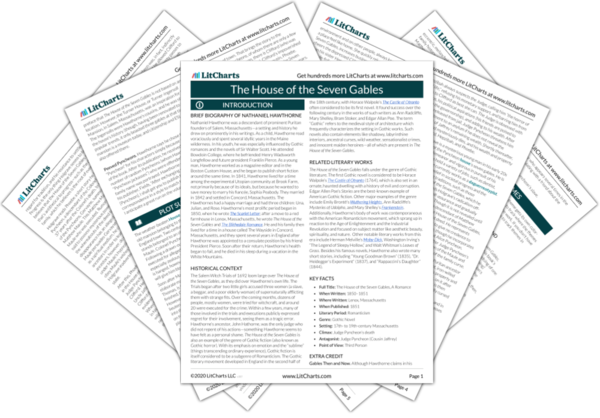Hepzibah is portrayed as both a sympathetic and a rather pitiable character, at once clinging to the world of her upbringing and trying, with varying success, to embrace an entirely new one. The term “huckster” simply refers to a seller of small items and, in this instance, doesn’t necessarily have the modern connotation of a dishonest peddler. Nevertheless, the circumstances feel shameful to Hepzibah, who has spent her entire life believing that she is above such things.
